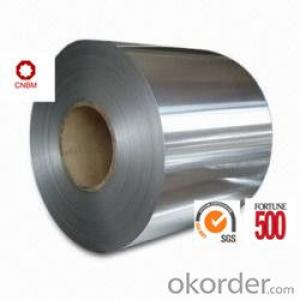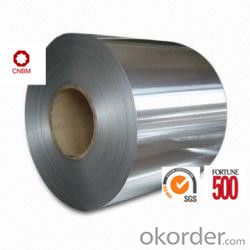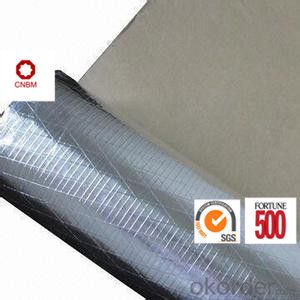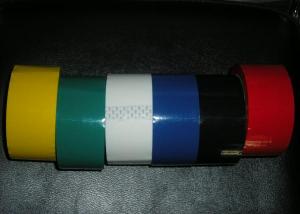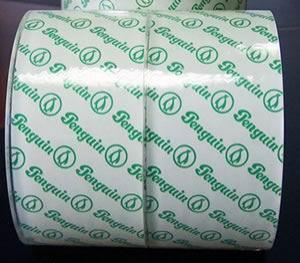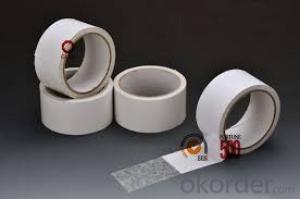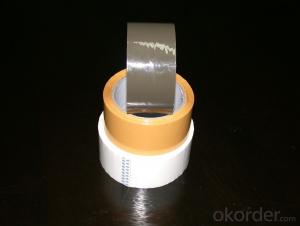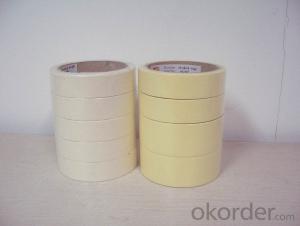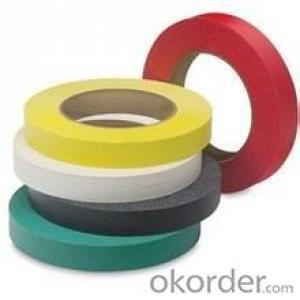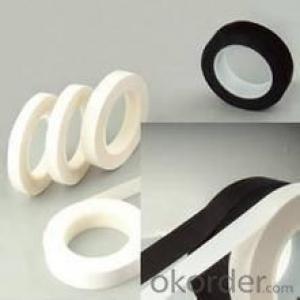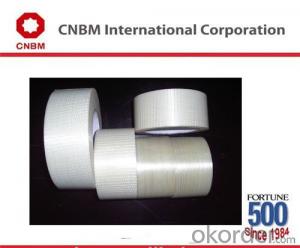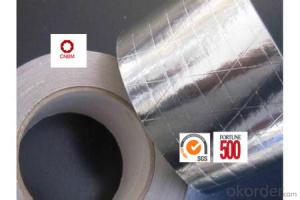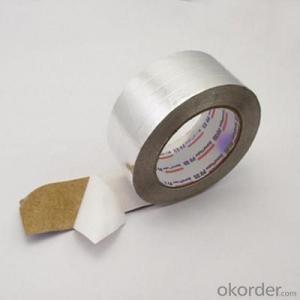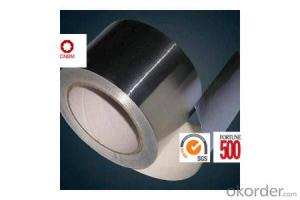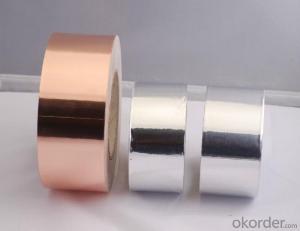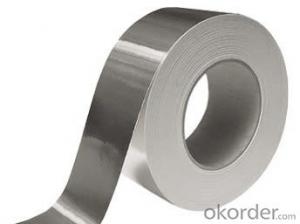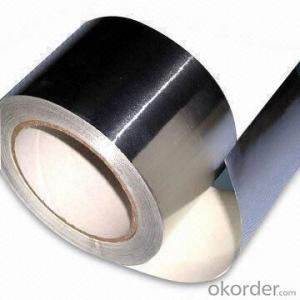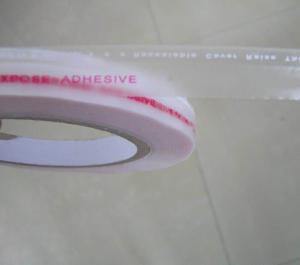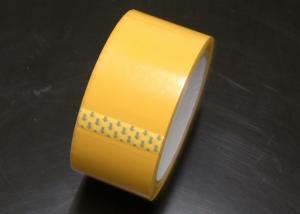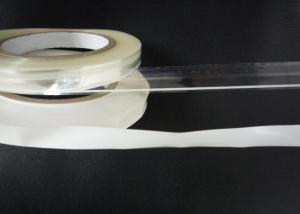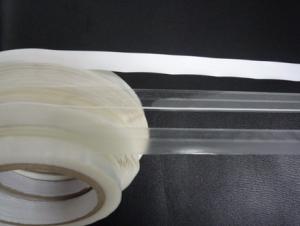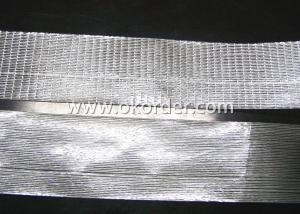Uhaul Packaging Tape - Aluminum Foil Tape Synthetic Rubber Based T-H2201P
- Loading Port:
- Shanghai
- Payment Terms:
- TT OR LC
- Min Order Qty:
- 10000 m²
- Supply Capability:
- 20000000 m²/month
OKorder Service Pledge
OKorder Financial Service
You Might Also Like
Specifications
·World Top 500 Enterprises
·Resistance to cold, heat and aging
·Best quality and competitive price
·SGS&ISO9001
Description
Synthetic Rubber Based Aluminum Foil Tape is of aluminum foil as the carrier, coating with solvent based acrylic, synthetic rubber-resin, or water based acrylic adhesive. It is excellent in flame retardant, high temperature stability, and anti-aging. It provides well insulation to various products.
General purpose of Synthetic Rubber Based Aluminum Foil Tape: widely used for seaming and jointing bonding of various vapor barriers, fixing thermal fin in refrigerators. Provide fast and permanent bond performance for vapor barrier against the moisture.
Typical Physical Reports of Synthetic Rubber Based Aluminum Foil Tape:

The thickness of the tape can be customized.
Cut Roll: As per customer’s requirements
Log Roll: Width1200mm; length according to customers’ requirements

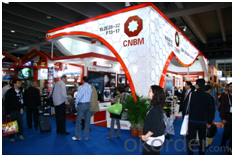
FAQ of Double Sided Tissue Tape
Q1. How about your company?
CNBM International Corporation (CNBM International) is a state-owned company and we have sound business relations with clients from over 120 countries. Currently, we have wholly-owned overseas subsidiaries and branches in 5 countries with a view to realize localization, which also represents an essential progress in our globalization target. We have over twenty years experiences.
Q2. What kind of service we can provide for you?
Sample of Aluminum Foil Tape is available.
Your inquiry will be replied within 12 hours.
24 hours service for you
Well-trained & experienced sales representative are ready to answer you.
Q3. How long can you receive the product?
Within 7-15 working days after receiving your deposit
Welcome to contact us and visit the factory!
- Q: Can packaging tape be used for sealing packages with electronics or electrical components?
- Yes, packaging tape can be used for sealing packages with electronics or electrical components. However, it is important to note that not all packaging tapes are suitable for this purpose. When selecting a packaging tape for sealing packages with electronics or electrical components, it is recommended to choose an anti-static or ESD (electrostatic discharge) safe tape. These tapes are specifically designed to prevent static electricity from damaging sensitive electronic components during shipping or handling. Using regular packaging tape without anti-static properties may pose a risk of static discharge that could potentially damage the electronics or affect their performance. Therefore, it is crucial to consider the specific requirements of the electronics or electrical components being packaged and select an appropriate tape to ensure their protection.
- Q: Does packaging tape come in different widths for different applications?
- Yes, packaging tape does come in different widths for different applications. Packaging tape is available in various widths ranging from as small as 0.75 inches to as wide as 3 inches or even more. The choice of width depends on the specific application and the size of the package being sealed. Smaller widths are often used for lighter weight packages or for sealing small boxes or envelopes. On the other hand, wider widths are commonly used for heavy-duty or larger boxes that require extra strength and security. The availability of different widths allows users to select the most appropriate tape size based on their specific packaging needs.
- Q: What are the considerations for using packaging tape on textured surfaces?
- When using packaging tape on textured surfaces, there are a few considerations to keep in mind. Firstly, the texture of the surface can affect the adhesion of the tape. Textured surfaces typically have uneven or rough areas, which may make it difficult for the tape to adhere securely. It is important to choose a packaging tape that is specifically designed for textured surfaces. These tapes usually have a stronger adhesive that can better stick to uneven surfaces, ensuring that the tape will stay in place. Another consideration is the durability of the tape. Textured surfaces can be more abrasive than smooth surfaces, which can cause the tape to wear out more quickly. It is important to select a packaging tape that is made from a durable material, such as reinforced or heavy-duty tape. These types of tape are designed to withstand more wear and tear, providing a longer-lasting bond on textured surfaces. Additionally, the texture of the surface can also affect the appearance of the tape. Since textured surfaces are not smooth, the tape may not lay flat and can create air pockets or wrinkles. This can make the package look untidy or unprofessional. To improve the appearance, it may be necessary to use extra tape or apply it in a way that smooths out any unevenness. Lastly, it is important to consider the removal of the tape from textured surfaces. Textured surfaces can make it more difficult to remove the tape cleanly without leaving behind any residue. To prevent damage to the surface or any sticky residue, it is recommended to test the tape on a small, inconspicuous area before fully applying it. If the tape does leave residue, there are adhesive removers available that can help safely remove any remaining residue. In summary, when using packaging tape on textured surfaces, it is important to choose a tape specifically designed for uneven surfaces, select a durable tape that can withstand the texture, consider the appearance of the tape on the textured surface, and be cautious of any potential residue left behind when removing the tape.
- Q: What are the common sizes of packaging tape?
- The common sizes of packaging tape typically range from 1.88 inches to 3 inches in width, while the length can vary depending on the brand and type of tape.
- Q: Can packaging tape be used for sealing furniture or home goods?
- Yes, packaging tape can be used for sealing furniture or home goods. Packaging tape is designed to provide a secure and strong seal, making it suitable for various purposes including sealing boxes and packages. When used on furniture or home goods, packaging tape can help keep the item protected during transportation or storage. It is important to ensure that the tape is applied properly and that it does not damage the surface or leave any residue. Additionally, depending on the weight and size of the item, it might be more appropriate to use specialized tapes or techniques for sealing furniture or home goods to ensure maximum protection.
- Q: What is packaging tape?
- Packaging tape is a type of adhesive tape specifically designed for sealing and securing packages. It is typically made of a strong and durable material, such as polypropylene or PVC, and is used to hold boxes and cartons together during transportation or storage.
- Q: How does packaging tape perform on rough or uneven surfaces?
- Packaging tape typically does well on rough or uneven surfaces, thanks to its adhesive properties that allow it to stick firmly to most surfaces, even those that aren't perfectly smooth. The tape is designed to mold itself to the shape of the surface, ensuring a tight seal and preventing any possible lifting or peeling. However, it's important to note that the effectiveness of packaging tape on rough or uneven surfaces can vary depending on the specific type and quality of the tape being used. Some tapes may have stronger adhesion or more flexible backing materials, which can further improve their performance on rough or uneven surfaces. In certain situations, it may be necessary to apply more pressure or use multiple layers of tape to ensure a secure bond. Moreover, it's worth considering alternative packaging materials, like stretch film or strapping, for particularly rough or irregular surfaces, as they may offer a more dependable solution.
- Q: How do I prevent packaging tape from leaving a sticky residue?
- One way to prevent packaging tape from leaving a sticky residue is to use a high-quality tape that is specifically designed for packaging. Look for tape that is labeled as "residue-free" or "low-tack." Additionally, try not to leave the tape on the surface for an extended period of time as it can increase the chances of residue forming. When removing the tape, do it slowly and at a 45-degree angle to minimize any residue left behind. If there is still some residue, you can use rubbing alcohol or adhesive remover to gently wipe it off.
- Q: Is packaging tape easy to remove without damaging surfaces?
- Packaging tape is typically designed to be easily removed without causing any harm to surfaces. However, the ease of removal can vary depending on several factors, including the type and quality of the tape, the surface it is applied to, and how long it has been in place. Most packaging tapes are created to stick firmly to surfaces during transportation or storage, ensuring that the package remains sealed and secure. Nevertheless, they are also formulated to be peeled off easily when necessary, without leaving any residue or causing damage. In most situations, packaging tape can be removed by simply peeling it off slowly and evenly. The adhesive used in packaging tapes is generally developed to strike a good balance between sticking power and ease of removal. This allows for effortless removal without the need for excessive force or any sticky residue. However, there may be instances where the tape might be more challenging to remove, particularly if it has been in place for a long time or exposed to extreme temperatures. In such cases, using heat, such as a hairdryer, to soften the adhesive can be helpful, making it easier to peel off. It is important to note that the ease of tape removal can also be influenced by the surface it is applied to. Smooth and non-porous surfaces like glass or metal are generally easier to clean without causing any damage. On the other hand, porous or delicate surfaces like wood or painted walls may require more caution and care during removal to prevent any potential damage. In conclusion, while packaging tape is generally designed to be easily removed without causing damage, it is essential to consider factors such as tape quality, surface type, and removal technique to ensure a smooth and damage-free removal process.
- Q: How does packaging tape perform in high-pressure conditions?
- Packaging tape is designed to reliably adhere and seal in various conditions, including high-pressure environments. When faced with high-pressure conditions like shipping or transportation, packaging tape excels due to its powerful adhesive properties and robust construction. Typically, pressure-sensitive adhesive (PSA) is used in packaging tape, allowing it to stick to surfaces when pressure is applied. This enables the tape to form a secure bond with the packaging material, even under high-pressure circumstances. The tape's adhesive strength guarantees that it remains firmly attached to the package, preventing any potential damage or tampering during transit. Furthermore, packaging tape is often crafted from sturdy materials such as polypropylene or PVC, further enhancing its performance in high-pressure situations. These materials possess exceptional tensile strength, enabling them to endure significant pressure without breaking or tearing. As a result, the tape maintains its integrity and keeps the package sealed and safeguarded. Moreover, packaging tape frequently exhibits resistance against moisture, temperature fluctuations, and other environmental factors that can impact its performance. This resistance ensures that the tape sustains its adhesive strength and structural integrity, even in demanding conditions like high-pressure environments. In summary, packaging tape is specifically engineered to excel in high-pressure conditions. Its potent adhesive properties, durable materials, and resistance to various environmental factors make it a dependable choice for preserving package integrity and protection during shipping or transportation.
Send your message to us
Uhaul Packaging Tape - Aluminum Foil Tape Synthetic Rubber Based T-H2201P
- Loading Port:
- Shanghai
- Payment Terms:
- TT OR LC
- Min Order Qty:
- 10000 m²
- Supply Capability:
- 20000000 m²/month
OKorder Service Pledge
OKorder Financial Service
Similar products
Hot products
Hot Searches
